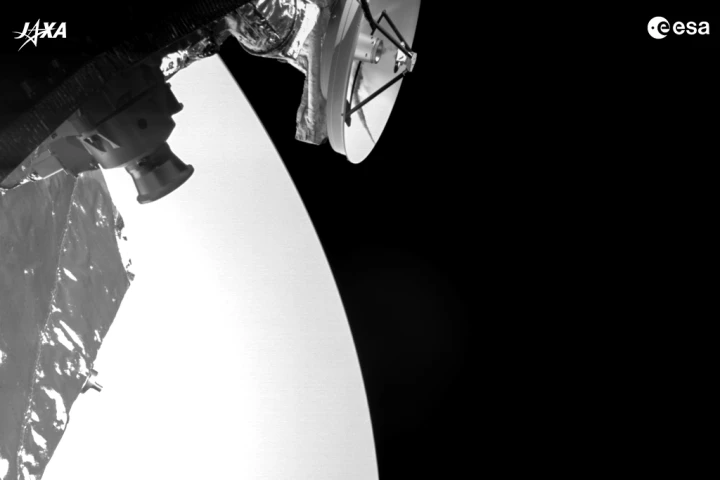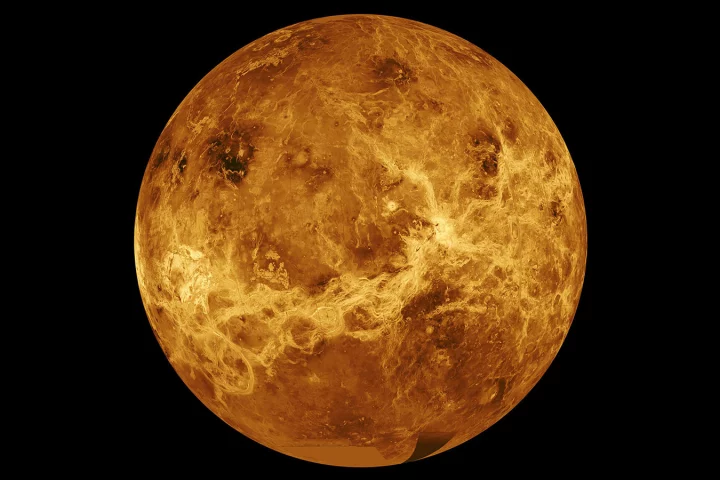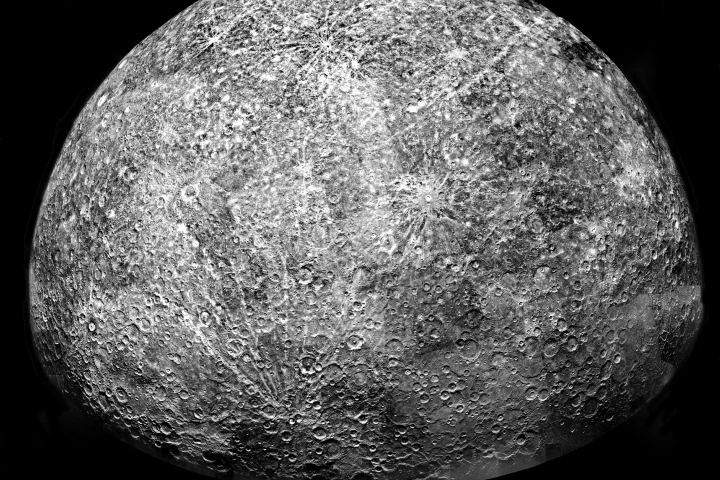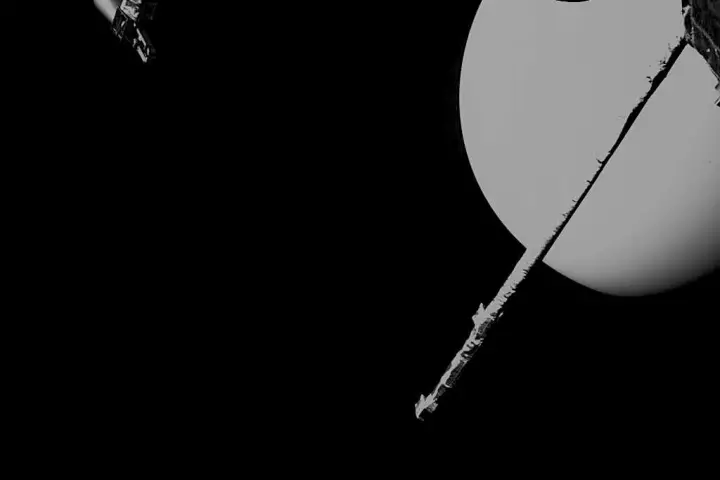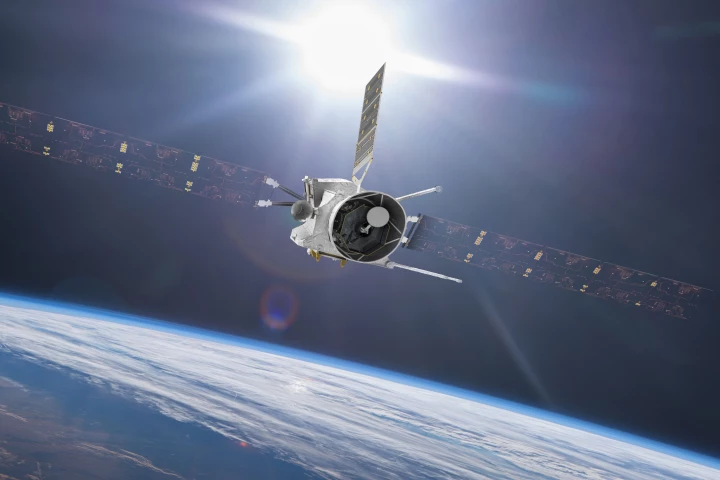BepiColombo
-
Nearly three years after lifting off from French Guiana, the BepiColombo space probe has now set its sights on Mercury for the first time, completing a "flawless" flyby over the weekend and collecting its first images.
-
The BepiColombo orbiter probe passed within 552 km (343 miles) of Venus as it completed one of nine flybys on its way to Mercury. Shortly after the encounter, the ESA/JAXA mission snapped a picture of Venus at a distance of 1,573 km (977 miles).
-
Two deep-space probes will make flybys of Venus within 30 hours of each other on their way to the inner reaches of the solar system next week. On August 9, the Solar Orbiter will pass by the planet, followed by the BepiColombo orbiter on August 10.
-
Mercury’s disproportionately massive core may be the result of the Sun’s powerful magnetic influence rather than the consequence of a cataclysmic collision with another body in the ancient past, according to the results of a new study.
-
The joint ESA-JAXA BepiColombo probe has successfully completed the first of two scheduled flybys of Venus, gathering data about the planet's dense carbon dioxide atmosphere as it came to within 10,720 km its surface.
-
ESA has released "sonifications" of the telemetry sent back by the BepiColombo Mercury probe during its April 20, 2020 flyby of Earth. The five audio recordings were captured by two instruments installed on one of the two linked orbiters.
-
The BepiColombo deep-space probe has successfully made its flyby of Earth on its journey to explore the planet Mercury. On April 10, the joint ESA/JAXA mission passed within 12,700 km of the Earth's surface as it carried out a slingshot maneuver.
-
This week Earth will be visited by a spacecraft that has traveled 1.4 billion km to get here. But no, it’s not aliens – it’s BepiColombo, just slingshotting around our planet for a gravitational speed boost on its roundabout journey to Mercury.
-
The coronavirus situation in Europe has forced ESA to temporarily suspend a number of its deep-space missions. To reduce risk to personnel, ESOC is reducing on-site crews and shutting down instruments on eight spacecraft.
-
ESA's BepiColombo spacecraft has fired up all four of its ion thrusters as it begins the first of 22 burn arcs. The engines will fire for two months as they propel the unmanned probe on the start of its 9-billion-km (5.6-billion-mi) journey to explore the planet Mercury.
-
The ion thrusters on ESA's BepiColombo spacecraft have been successfully tested in space as the probe embarks on the first leg of its epic seven-year voyage to the planet Mercury.
-
Scientists on the ESA’s first mission to Mercury have confirmed the outgoing BepiColombo spacecraft’s imaging instruments are in working order, with the probe snapping its first selfies and successfully returning them to Earth.

